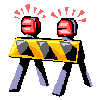How Do Movements Originate
I’m not against tutorials, I just want to provide a more complete perspective of learning to animate. So that’s why I try to address the thinking and philosophy behind things.
Today, I want to discuss an important philosophical approach to understanding any action. Do you want to think about animating the form or the force? Think about that for a moment. What motivates motion? Does your arm move because it is an arm or does it move because some internal forces are being applied? First there is thought, conscious or unconscious followed by the expansion or contraction of muscles which produces forces that are translated into movement. Perhaps because we can easily observe the movement of forms we want to draw those forms. Forces are for the most part not visible just the resulting effects of those forces are visible. Yet it is the internal forces, like muscles expanding and contracting, or external forces, like gravity or air resistance or inertia, that are actually responsible for movement. So when you want to animate movement you need to understand and account for the forces first and let the forms follow as the visible result.
Here’s an interesting way to think about this change in philosophical approach. When you draw shadows do you think first about the form of the shadow or do you first think about the sources and directions of light that produce the shadows? Forces have the same type of effect on the movement and distortion of forms. We will return to this approach often as we proceed.
Technorati Tags: [ animation, animating, drawing, cartoon making ]


